#peverell marley
Text

Two rare noir playing tonight at NOIR CITY Hollywood, both screening in 35mm, 7:30pm at American Cinematheque: TO THE ENDS OF THE EARTH & WHIPLASH. Introduction by Alan K. Rode.
Full festival info and tix: https://bit.ly/3pJBmcV
7:30
TO THE ENDS OF THE EARTH (1948)

Screenplay by Jay Richard Kennedy
Directed by Robert Stevenson
One of the first post-war movies that attempted to deal seriously with the burgeoning narcotics trade in defiance of a Production Code that forbade nearly any mention of the subject! In true “docu-noir” style, Treasury agent Dick Powell trots the globe trying to pin down the leader of a diabolical heroin ring with a series of surprising occurrences culminating in a stunning denouement. Directed by Robert Stevenson, this fascinating period suspenser is almost never screened theatrically. Don’t miss this one!
FORMAT: 35mm
9:40
WHIPLASH (1948)

Screenplay by Maurice Geraghty and Harriet Frank Jr.
Directed by Lewis Seiler
Blend OUT OF THE PAST with BODY AND SOUL and what do you get? An artist who falls for a mystery woman, pursues her to the Big Apple, and ends up fighting for the middleweight championship! A contentious Dane Clark is artist/boxer Mike Angelo, Alexis Smith is his sexy siren, Eve Arden the sassy girlfriend, Douglas Kennedy the scar-faced gunsel, and best of all, Zachary Scott is the sadistic wheelchair-bound fight manager! “Whiplash” is what you’ll get keeping up with the breakneck plot pacing culminating in a smashing finale!
FORMAT: 35mm
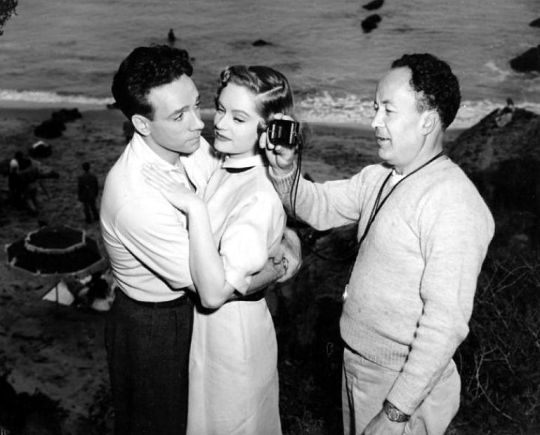
#35mm#35mm screening#whiplash 1948#to the ends of the earth 1948#film noir#film noir festival#alan k rode#american cinematheque#noir city#dick powell#maylia#gloria fong#dane clark#zachary scott#alexis smith#Peverell Marley
13 notes
·
View notes
Text
Whiplash
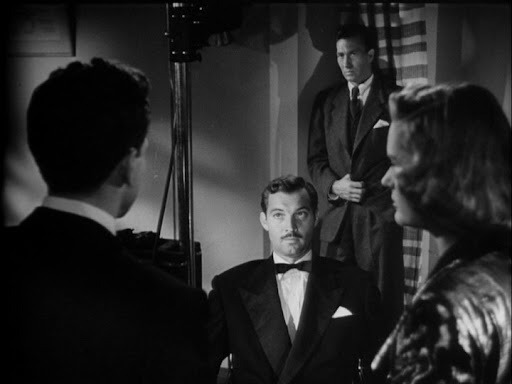
The fact that S.Z. Sakall and Eve Arden are on hand to supply expert comic relief suggests that Warner Bros. actually expected the plot of Lew Seilers’ WHIPLASH (1948, TCM, YouTube) to be taken seriously. If they had cast poorer actors in the leads, it might now be considered high camp. Instead, it’s just silly and reminiscent of better film noirs. Artist Dane Clark falls for Alexis Smith while she’s vacationing on the Pacific. When she leaves abruptly, he follows her to New York, where he finds she’s married to a wheelchair-bound former boxer turned gangster (Zachary Scott). Scott takes a liking to Clark’s right hook and offers to sponsor him as a professional boxer, a job Clark takes simply to slut shame the woman he claims to love. Given his aggressive courting style — he keeps telling her what she wants — that doesn’t come as much of a surprise. Clark is an engaging personality who was brought to Warner Bros. as a threat to rebellious star John Garfield, and the film is clearly designed to cash in on the success of Garfield’s first independent production, BODY AND SOUL (1947). He manages to be both tough and vulnerable as required. Scott has less to work with. It’s his standard cad role, with the wheelchair the only difference. The real surprise, however, is Smith. Her face doesn’t move much, but her eyes are more alive than in many of her Warner’s films, and her line readings are impressive. She also gets the full glamour treatment from cinematographer Peverell Marley, complete with shots where the key light makes her eyes glow. He and Seiler also create some great film noir compositions. Franz Waxman did the evocative score. The film also features Jeffrey Lynn as Smith’s alcoholic brother, Alan Hale as Clark’s trainer, future Mouseketeer Jimmie Dodd as a pianist and Maudie Prickett as a nasty landlady who’s the butt of Arden’s jokes.
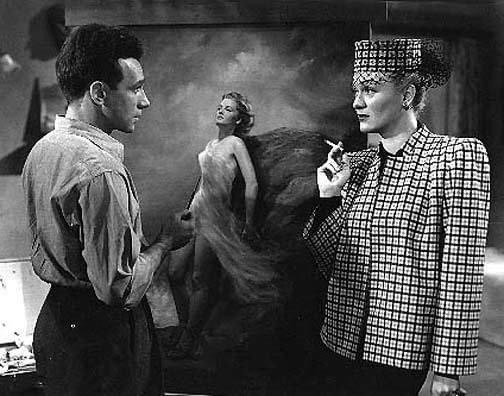
#film noir#dane clark#alexis smith#zachary scott#eve arden#s.a. sakall#jeffrey lynn#alan hale#jimmie dodd#maudie prickett#peverell marley#franz waxman
1 note
·
View note
Text
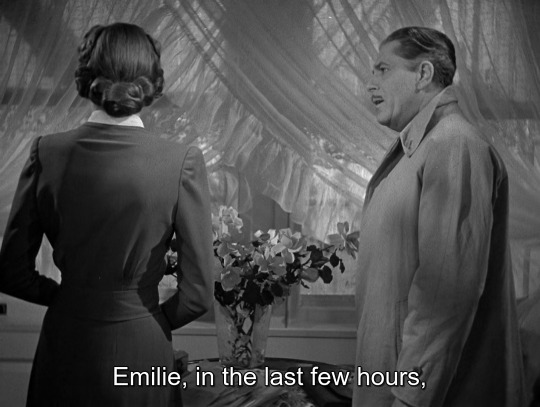




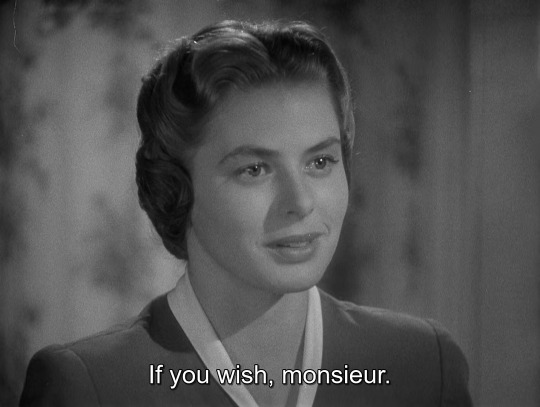




Adam Had Four Sons (Gregory Ratoff, 1941).
#adam had four sons#adam had four sons (1941)#gregory ratoff#ingrid bergman#warner baxter#j. peverell marley#francis d. lyon#david s. hall#david kidd#rudolph sternad#howard bristol
5 notes
·
View notes
Text
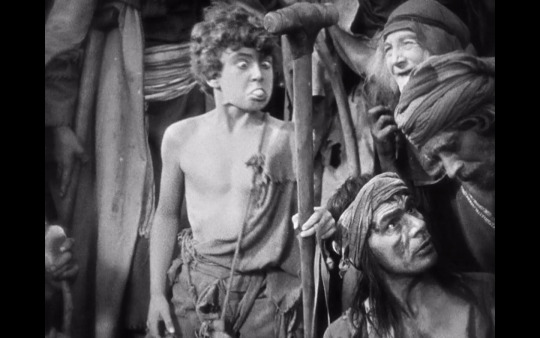
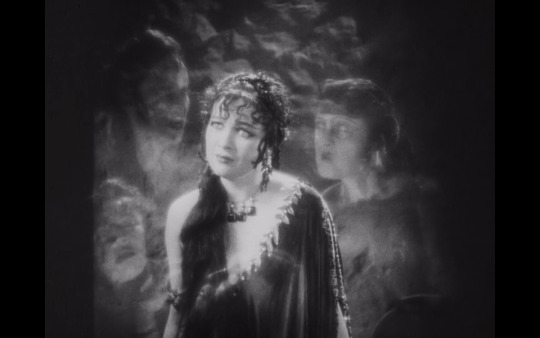
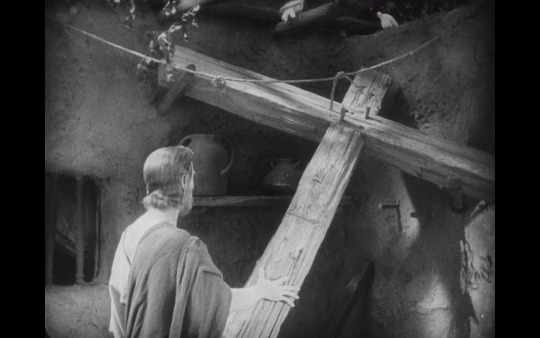
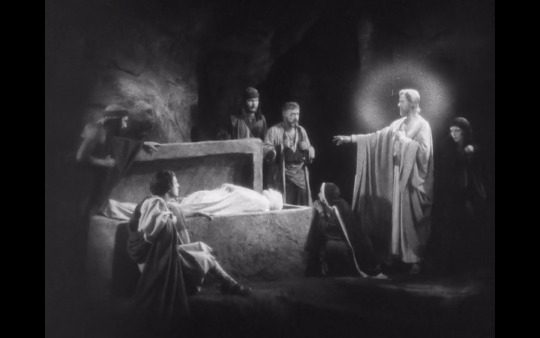
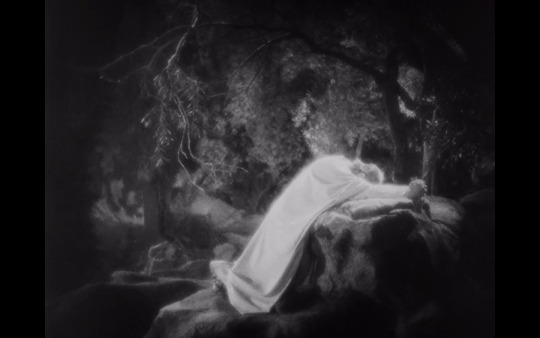
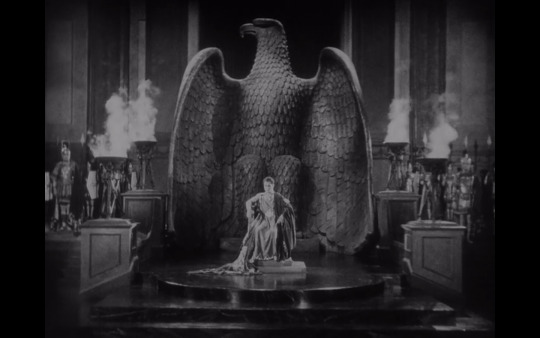
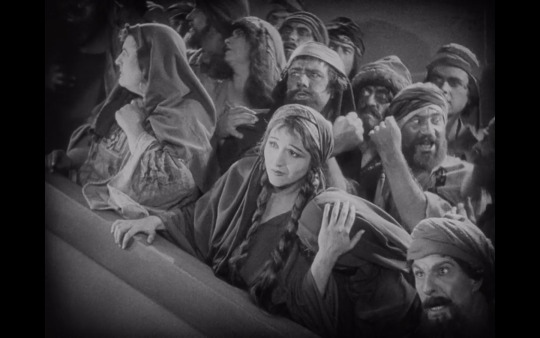


"Where is this vagabond carpenter?"
The King of Kings (1927)
Directed by Cecil B. DeMille
Cinematography by J. Peverell Marley and F.J. Westerberg
2 notes
·
View notes
Text
Two Norma Shearer Silent Films

Norma Shearer meets Norma Shearer in Lady of the Night

Norma Shearer and Johnny Mack Brown in A Lady of Chance
Lady of the Night (Monta Bell, 1925)
Cast: Norma Shearer, Malcolm McGregor, Dale Fuller, George K. Arthur, Fred Esmelton, Lew Harvey. Screenplay: Alice D.G. Miller, based on a story by Adela Rogers St. Johns. Cinematography: André Barlatier. Art direction: Cedric Gibbons. Film editing: Ralph Dawson.
A Lady of Chance (Robert Z. Leonard, 1928)
Cast: Norma Shearer, Johnny Mack Brown, Lowell Sherman, Gwen Lee, Eugenie Besserer. Screenplay: Edmund Goulding, Andrew Percival Younger; titles: Ralph Spence, based on a story by Leroy Scott. Cinematography: J. Peverell Marley, William H. Daniels. Art direction: Cedric Gibbons. Film editing: Margaret Booth.
Norma Shearer often seemed to love the camera more than her leading men. Granted that neither Malcolm McGregor (Lady of the Night) nor Johnny Mack Brown (A Lady of Chance) is much more than a handsome presence on the screen -- not quite enough to act with when you've got Shearer's talent -- she still seems to hog these two silent pictures, especially when she's playing a tough girl. In Night she has a double role: the hard-bitten Molly Helmer and the sweet rich girl Florence Banning. She's surprisingly good as Molly -- and totally unbelievable as Florence, who decides to sacrifice her chance at marriage with inventor David Page (McGregor) because Molly had him first. But the unbelievability is built into the story by Adela Rogers St. Johns, who churned out this sort of stuff for movies on a regular basis. In A Lady of Chance, Shearer has a role that would later be perfected by Barbara Stanwyck: the tough grifter with a soft heart. The story is nonsense again: She falls for her mark, a Southerner she thinks is a rich man, even after he takes her home to Alabama and she learns that she has jumped to the wrong conclusion. Stanwyck does it better in Ball of Fire (Howard Hawks, 1941) and The Lady Eve (Preston Sturges, 1941), but Stanwyck also had better directors than the prolific but undistinguished Robert Z. Leonard. He allows, or perhaps encourages, Shearer to mug and pose endlessly; at first she's delightful, but a little of that sort of thing goes a long way. A Lady of Chance also contains an embarrassing heap of period racism, when Shearer and Brown are being wheeled along the Atlantic City boardwalk by a singing black man, and Brown remarks that it reminds him of "the darkies singing on the plantation back home."
3 notes
·
View notes
Photo

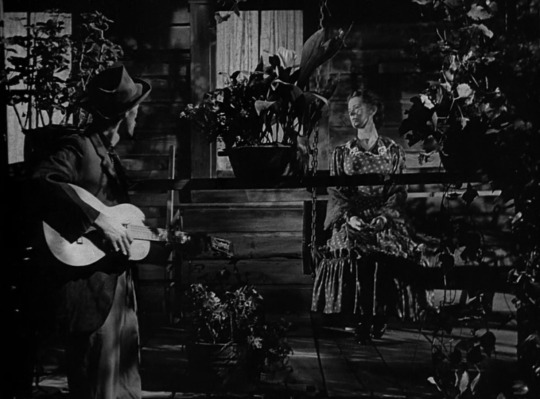
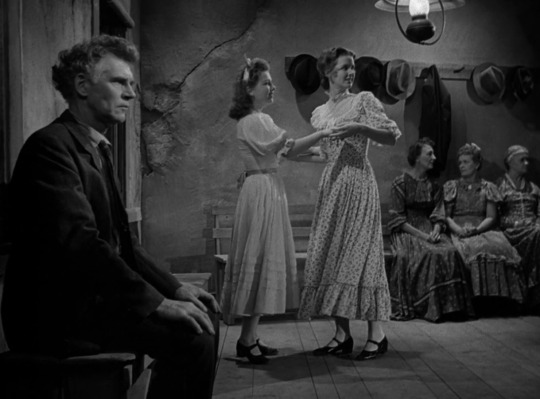

If you can learn to live with cotton-mouths and 'gators and panthers, on places where there ain't a solid bit of ground to stand on, why I reckon you're welcome to your life.
Swamp Water (1941) dir. Jean Renoir, DP J. Peverell Marley
#swamp water#jean renoir#moving pictures#official original content tag#hate when i go to reblog some little pictures about the movie i just watched and there aren't any#a little treat for the next person who ventures into the tag
15 notes
·
View notes
Text
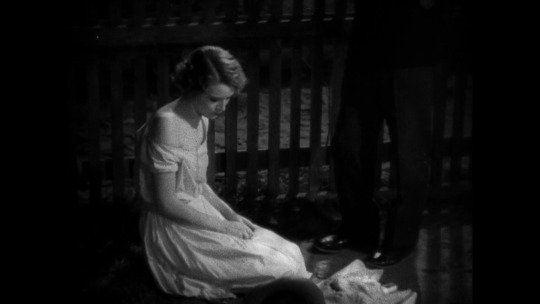
Tavaszi zápor (1932)
dir.: Fejős Pál
dop.: Eiben István, J. Peverell Marley
#filmstill#filmstills#tavaszi zápor#fejős pál#paul fejos#eiben istván#hungarian cinema#1930s#1930s movies
0 notes
Photo

Ingrid Bergman and cinematographer Peverell Marley on the set of Adam Had Four Sons, 1941
#Ingrid Bergman#peverell marley#adam had four sons#on set#*#even in a pic with her eyes closed she looks good!
52 notes
·
View notes
Photo
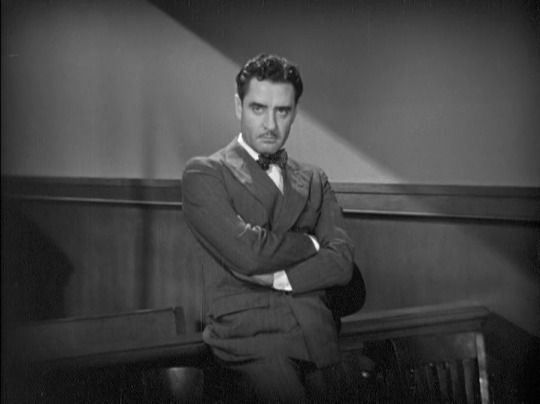


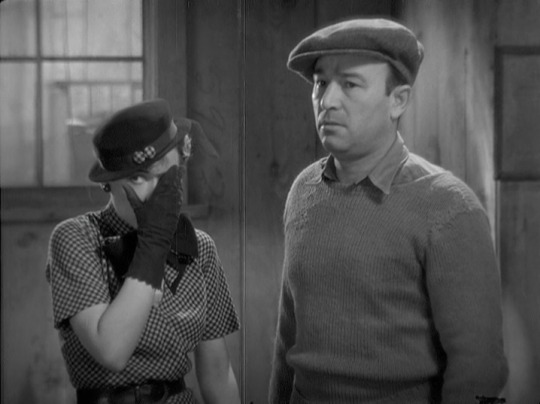
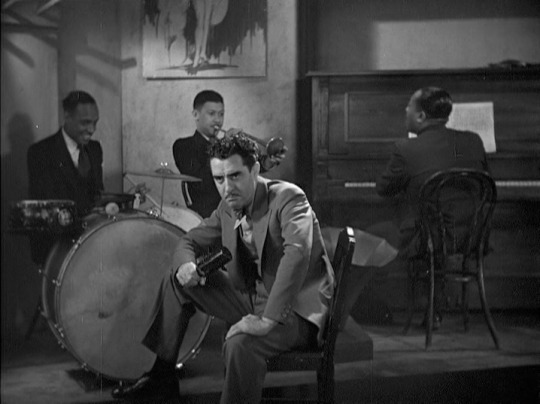
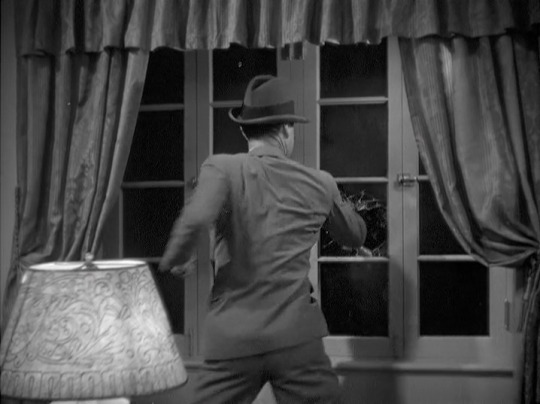



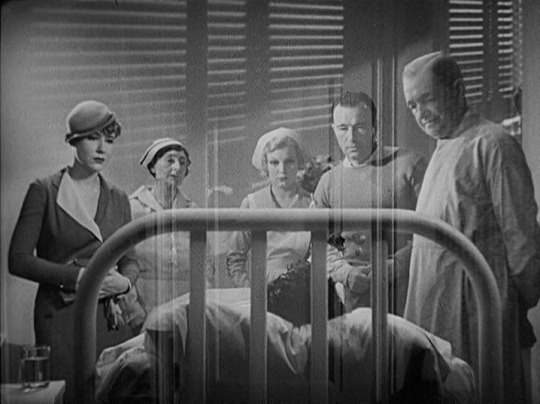
fast workers (us, browning 33)
12 notes
·
View notes
Photo

The Hound of the Baskervilles (1939)
#1930s#actor lionel atwill#dir sidney lanfield#dp j peverell marley#cat horror#cat mystery#cat thriller#american#monochrome#bow tie#tiw#beard#glasses#ear#collar#shadow#the hound of the baskervilles 1939#the hound of the baskervilles
4 notes
·
View notes
Audio
Coming right at you! It's PHANTOM OF THE RUE MORGUE (1954) from director Roy Del Ruth! This remake of 1932's MURDERS IN THE RUE MORGUE / adaptation of Edgar Allan Poe's detective story still has some surprises in store...
Starring Karl Malden, Claude Dauphin, Patricia Medina, and Steve Forrest, the film also has cameos from Merv Griffin, Charles Gemora, and The Flying Zacchinis!
Context setting 00:00; Synopsis 27:56; Discussion 53:12; Ranking 1:08:54
#podcast#roy del ruth#phantom of the rue morgue#murders in the rue morgue#edgar allan poe#henry blanke#harold medford#james webb#david buttolph#j peverell marley#warner bros#classic horror#3d#warner color#karl malden#claude dauphin#patricia medina#anthony caruso#merv griffin#charles gemora#police procedural#horror
16 notes
·
View notes
Text
The Two Mrs. Carrolls

How can anybody settle for Tom Cruise or Gwyneth Paltrow after watching real actor-stars like Humphrey Bogart and Barbara Stanwyck? Even in one of their lesser vehicles, Peter Godfrey’s THE TWO MRS. CARROLLS (1947, TCM), it’s feels like a privilege to look into their eyes and see their characters come to life. The film was savaged by critics and ignored by audiences, mainly because they rejected Bogart’s casting as a psychopathic killer, but it has a lot to recommend it, particularly the use of deep focus and dark shadows by cinematographer J. Peverell Marley and a moody symphonic score by Franz Waxman. The stars’ first scene is a misfire. Thomas Job’s script has them acting like youngsters in the first throes of love, which plays against their more mature appearance and technique, rather than as an experienced couple surprised to find themselves in love. But once Bogart kills his wife to marry the richer and more beautiful Stanwyck, their work picks up. Stanwyck has some astonishing scenes of discovery as she realizes what Bogart has done in the past and is planning to do now. And Bogart seems to be rehearsing for what would become his greatest role, the paranoid Fred Dobbs in THE TREASURE OF THE SIERRA MADRE (1948), and a lot of it works here. Job’s script pours on a few too many quirks for his character. He’s a painter tortured by an artistic block, he goes ballistic when his daughter mentions Van Gogh’s madness, and just to top it off, he’s driven to distraction by ringing bells. But most of Bogart’s work is more restrained than critics would suggest, and his final scene is beautifully underplayed. Alexis Smith, as the other woman luring Bogart from Stanwyck, does more than usual in her Warner Bros. period. She seems to be enjoying playing a nasty character rather than an ingenue. There’s also good work from Janis Carter as Bogart’s surprisingly mature daughter — she’s nine going on 50 — and Anita Bolster as a housekeeper so flinty she could give Mrs. Danvers a run for her money. I’d love to see the television adaptation with Susan Oliver.
1 note
·
View note
Photo

- Does that notch...? Does that stand for a man?
- That's what it stands for.
- You had to put that there so you'd remember?
- That's right.
- Was he asleep when you shot him?
The Left Handed Gun, Arthur Penn (1958)
#Arthur Penn#Leslie Stevens#Paul Newman#Lita Milan#John Dehner#Hurd Hatfield#James Congdon#James Best#Colin Keith Johnston#John Dierkes#J. Peverell Marley#Alexander Courage#Folmar Blangsted#1958
2 notes
·
View notes
Video
youtube
Film: The Hound of the Baskervilles (1939)
Language: English
Subtitles: N/A
Director: Sidney Lanfield
Producer: Gene Markey, Darryl F. Zanuck
Writer: Sir. Arthur Conan Doyle
Screenplay: Ernest Pascal
Cast: Basil Rathbone, Nigel Bruce, Richard Greene, Wendy Barrie
Music: David Buttolph, Charles Maxwell, Cyril J. Mockridge, David Raksin
Cinematography: Peverell Marley
Editor: Robert Simpson
Colourist:
Production Design: János Körömi
Costume: Zoltán Füle
Production: 20th Century Fox
Distributor: 20th Century Fox
Description: The Hound of the Baskervilles (1939) is a mystery film based on the novel The Hound of the Baskervilles by Sir Arthur Conan Doyle. It is among the best-known cinematic adaptations of the book and is often regarded as one of the best. The film stars Basil Rathbone as Sherlock Holmes, Nigel Bruce as Dr. Watson and Richard Greene as Henry Baskerville.
The Hound of the Baskervilles marks the first of the fourteen Sherlock Holmes films starring Rathbone and Bruce as Holmes and Watson, respectively. It is also notable as the earliest known Sherlock Holmes film to be set in the Victorian period.
Sherlock Holmes and Dr. Watson receive a visit from Dr. James Mortimer, who wishes to consult them before the arrival of Sir Henry Baskerville, the last of the Baskervilles, heir to the Baskerville estate in Devonshire.
Dr. Mortimer is anxious about letting Sir Henry go to Baskerville Hall, owing to a supposed family curse. He tells Holmes and Watson the legend of the Hound of the Baskervilles, a demonic dog that first killed Sir Hugo Baskerville several hundred years ago and is believed to kill all Baskervilles in the region of Devonshire.
#the hound of the baskervilles#sidney lanfield#english cinema#USA#1930s#mystery#Adventure#classic#arthur conan doyle
2 notes
·
View notes
Text
"THE HOUND OF THE BASKERVILLES" (1939) Review

"THE HOUNDS OF BASKERVILLE" (1939) Review
The year 1939 proved to be a momentous time for fans of Arthur Conan Doyle's Sherlock Holmes. The year marked the debut of two movies that featured the movie introduction of Basil Rathbone and Nigel Bruce as the famous literary detective and his friend, Dr. John Watson.
There had been previous movie, stage and radio adaptations of the Sherlock Holmes. But despite the recent success of Robert Downey Jr., Jude Law, Benedict Cumberbatch and Martin Freeman in the roles of Holmes and Watson, Basil Rathbone and Nigel Bruce would become the first cinematic pair to truly become famous in the roles. They ended up portraying Holmes and Watson in fourteen movies for Twentieth Century Fox and Universal Pictures. And their first movie together was 1939's "THE HOUND OF THE BASKERVILLES".
Based upon Doyle's 1902 novel, "THE HOUND OF THE BASKERVILLES" is about Sherlock Holmes and Dr. John Watson's investigation into the legend of a supernatural hound, a beast that may be stalking a young heir on the fog-shrouded moorland that makes up his estate in Devonshire. The investigating pair receive a visit from a Dr. James Mortimer, who believes that the last heir of Baskerville Hall might be in danger from a legendary hound that may have killed many in the Baskerville line, including the family's founder - Sir Hugo Baskerville - and Dr. Mortimer's close friend, Sir Charles Baskerville. Holmes originally dismisses the so-called "demonic hound" as a fairy tale. But when Sir Henry arrives from Canada and receives a series of threats, Holmes sends Watson to accompany the young heir and Dr. Mortimer to Baskerville Hall, claiming that he is too busy to accompany them himself. Sir Henry quickly develops a romantic interest in Beryl Stapleton, the stepsister of his neighbor, a local naturalist named John Stapleton. The new arrivals also deal with the stranger behavior of Sir Henry's servants, Mr. John and Mrs. Barryman; and an escapee from Dartmoor Prison lurking on the moor. Right before an attempt on Sir Henry's life, Holmes finally makes his appearance in Devonshire. And Dr. Watson learns that he had been making his own inquiries for quite some time, while in disguise.
Ernest Pascal's screenplay included at least one or two changes from Doyle's novel. One, Sir Henry never became romantically involved with Beryl Stapleton. The butler's name was changed from John Barrymore to Barryman, due to the existence of famous actor John Barrymore. And unlike the novel, the murderer's fate was left unknown, despite Holmes' assurances that the former would not get very far, due to constables being posted on the road. Aside from the previously mentioned, "THE HOUND OF THE BASKERVILLES" remained faithful to the original novel. Even more importantly, the movie proved to be a surprise hit for the Twentieth Century Fox.
After watching "THE HOUND OF THE BASKERVILLES", it was easy to see why it became a hit. Directed by Sidney Lanfield, the movie is a well-paced and solid piece of entertainment filled with action, suspense, a little romance, and rich atmosphere. As much as I love murder mysteries, they have a tendency to drag a movie's pacing at one point or another . . . despite the movie's quality. My only real complaint about Pascal's plot was the vague manner in which he left the murderer's fate open. Why did he do it? And why did Lanfield and studio boss, Darryl F. Zanuck, allow Pascal to get away with this?
The suspenseful atmosphere re-created for the movie's Devonshire setting could have easily done this. But Lanfield and the action featured in the plot prevented this from happening. And speaking of atmosphere, I have to congratulate art directors Richard Day and Hans Peters, along with set decorator Thomas Littlet and legendary cinematographer J. Peverell Marley for doing such an excellent job in not only re-creating the mysterious atmosphere of the Devonshire moors and more importantly, late Victorian England.
Basil Rathbone had been known for the villainous roles he had portrayed in many costume dramas in the 1930s. Before "THE HOUND OF THE BASKERVILLES", he had only portrayed one or two heroic types on screen - in 1938's "THE DAWN PATROL" and 1939's "SON OF FRANKENSTEIN". For an actor known for portraying villains, it is ironic that his most well-known role would prove to be the heroic Sherlock Holmes. Not only did Rathbone seemed like the physical embodiment of the fictional sleuth, but he captured the character's sharp intelligence, wit and strong will. And his screen chemistry with Nigel Bruce was spot on. They made a perfect screen team. What I enjoyed about Bruce's portrayal of Dr. John Watson is that he was not the blustering buffoon that his character would become in the Universal Pictures. All right, Bruce's Dr. Watson has a bit of bluster in his characterization. But his Watson was a sharp and observant man, whose comments about some of the suspects would prove to be accurate. And like Rathbone's Holmes, he also had a nice, subtle wit.
The rest of the cast proved to be solid. Lionel Atwill gave a first-rate performance as Dr. James Mortimer, the man who hired Holmes to investigate the strange deaths around Baskerville Hall. Beryl Mercer gave a funny performance as Dr. Mercer's dithery wife, who was into spiritualism and seances. Morton Lowry was both charming and intelligent as Sir Henry's neighbor, who also harbored suspicions about the strange occurrences Wendy Barrie proved to be a sweet and charming Beryl Stapleton. Although I must honest that I found her character to be slightly one-dimensional at times. I could say the same about Richard Greene's Sir Henry Baskerville, whose good looks and charming personality made the character seemed a little too ideal for my tastes. Greene was credited as the film's lead character. But when the movie proved to be a surprise hit, Rathbone and Bruce - quite rightly - assumed the lead credits in future Sherlock Holmes films. John Carradine gave one of the movie's better performances as Sir Henry's mysterious and slightly sinister butler, John Barryman. Whereas Carradine was mysterious, actress Eily Malyon seemed fearful and secretive as Barryman's emotional wife.
Unless one is a stickler for a movie strictly adhering to its novel source, any Sherlock Holmes fan would find "THE HOUND OF THE BASKERVILLES" to be a very entertaining and atmospheric adaptation of Arthur Conan Doyle's novel. And both Basil Rathbone and Nigel Bruce ended up proving they were the right men at that time to portray Sherlock Holmes and Dr. John Watson.
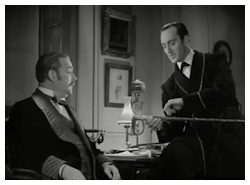
#Sherlock Holmes#dr. john watson#the hound of the baskervilles#the hound of the baskervilles 1939#sidney landfield#basil rathbone#nigel bruce#richard greene#lionel atwill#beryl mercer#morton lowry#wendy barrie#john carradine#eily malyon#victorian age#old hollywood#period drama#costume drama
2 notes
·
View notes
Text
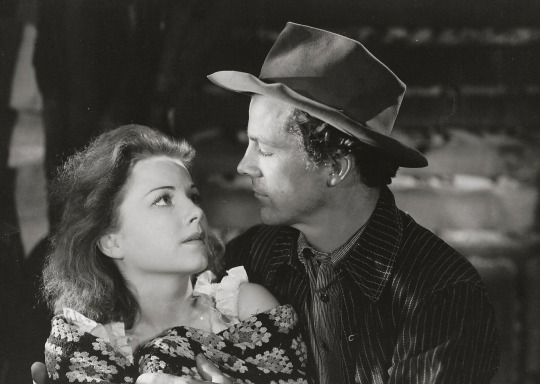
Anne Baxter and Dana Andrews in Swamp Water (Jean Renoir, 1941)
Cast: Walter Brennan, Walter Huston, Anne Baxter, Dana Andrews, Virginia Gilmore, John Carradine, Mary Howard, Eugene Pallette, Ward Bond, Guinn "Big Boy" Williams. Screenplay: Dudley Nichols, based on a novel by Vereen Bell. Cinematography: J. Peverell Marley. Art direction: Richard Day, Joseph C. Wright. Film editing: Walter Thompson. Music: David Buttolph.
Swamp Water has a few things working against it in addition to its title. For one, having a cast of familiar Hollywood stars pretending to be farmers, hunters, and trappers living on the edge of the Okefenokee swamp, and saying things like "I brung her" and "He got losted," makes for a certain lack of authenticity. And at 32, its leading man, Dana Andrews, is about a decade too old to be playing the callow youth he's supposed to be in the movie. Add to that the director, Jean Renoir, is a wartime exile from France, making his first film in Hollywood, and you might expect the worst. Fortunately, it has a screenplay by a master, Dudley Nichols, and an eminently watchable cast that includes Walter Brennan, Walter Huston, Anne Baxter, John Carradine, Ward Bond, and Eugene Pallette, who while they may never quite convince us that they're Georgia swamp-folk, do their professional best. It turns out to be a thoroughly entertaining movie that, while it doesn't add any luster to Renoir's career, doesn't detract from it either. This was Andrews's second year in movies, and he gives the kind of energetic performance that mostly overcomes miscasting. Born in Mississippi and raised in Texas, he also seems to know the character he's called on to play, perhaps a little better than the city-bred Baxter, whose efforts at being the village outcast are a bit forced. Brennan as usual plays an old coot, but without overdoing the mannerisms -- it's a slyly engaging performance. Much of the footage was shot by cinematographer J. Peverell Marley and the uncredited Lucien Ballard in the actual swamp and environs near Waycross, Georgia. There is some obvious failure to match the location footage with that shot back in the 20th Century-Fox studio, but it's not terribly distracting.
2 notes
·
View notes